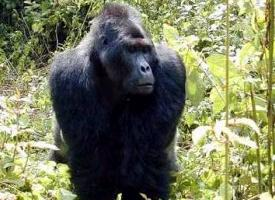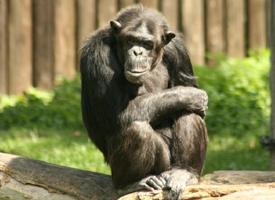
Súlyok és méretek
| Súly | 120-tól 200-ig kg |
|---|
Biológiai adatok
| Élettartam | 40-tól 50-ig éves |
|---|
Veszélyeztetettség
| Veszélyeztetett |
Állatleírás
The Eastern Gorilla (Gorilla beringei) stands as a majestic and imposing figure within the dense rainforests and mountainous regions of Central and East Africa. This remarkable species is distinguished by its sheer size and strength, coupled with a surprisingly gentle and social nature, making it one of the most fascinating creatures in the animal kingdom. The Eastern Gorilla is further divided into two subspecies: the Mountain Gorilla (Gorilla beringei beringei) and the Eastern Lowland Gorilla (Gorilla beringei graueri), each adapted to thrive in their specific habitats.Physically, Eastern Gorillas are the largest of the living primates. Males, particularly, are notable for their imposing stature, standing up to 1.7 meters (5.6 feet) tall when upright on their legs, and weighing up to 220 kilograms (484 pounds). They are covered in thick, dark hair, which helps insulate them against the cold in their high-altitude habitats. Notably, adult males develop a patch of silver hair on their back as they mature, earning them the name "silverbacks." This distinctive feature signifies maturity, strength, and leadership within their social groups.
Eastern Gorillas have a broad chest and shoulders, a large head, and a relatively short trunk. Their arms are long and muscular, extending beyond their knees when standing, which aids in their knuckle-walking mode of locomotion. Their hands and feet are large and strong, equipped with opposable thumbs and big toes, enabling them to grasp and manipulate objects with remarkable dexterity.
Socially, Eastern Gorillas live in stable, cohesive groups led by a dominant silverback male, who takes responsibility for the safety and well-being of the group. These groups typically consist of several females, their offspring, and a few younger males, although the silverback has the ultimate authority. The social structure is critical for their survival, providing protection against predators and rival gorilla groups. Communication within the group is complex, involving a variety of vocalizations, body postures, and facial expressions.
Eastern Gorillas are predominantly herbivorous, with a diet that consists mainly of leaves, shoots, stems, bark, and fruit. This diet requires them to spend a significant portion of their day foraging in the dense vegetation of their forest habitats. Their feeding habits play a crucial role in the ecosystem, as they help to disperse seeds and maintain the health and diversity of their forest environment.
Unfortunately, the Eastern Gorilla is classified as Critically Endangered due to a range of threats that have severely impacted their populations. These threats include habitat destruction, poaching, disease, and civil conflict. Conservation efforts are ongoing to protect these magnificent animals and their habitats, involving habitat protection, anti-poaching patrols, and community engagement initiatives. The survival of the Eastern Gorilla is crucial, not only for the preservation of their species but also for the biodiversity of their ecosystems, which are vital to the health of our planet.
In summary, the Eastern Gorilla is an awe-inspiring species, characterized by its impressive size, social complexity, and gentle nature. Despite facing significant threats to their survival, efforts to conserve and protect these magnificent animals continue, highlighting the importance of preserving our natural world and its inhabitants.
Hasonló állatok
Új állatfotók
Top 10 állat
- Dolphin gull (Leucophaeus scoresbii)
- Diana monkey (Cercopithecus diana)
- Moustached guenon (Cercopithecus cephus)
- Galápagos tortoise (Geochelone nigra complex)
- Japanese macaque (Macaca fuscata)
- Stone loach (Barbatula barbatula)
- Russian tortoise (Testudo horsfieldii)
- Greek tortoise (Testudo graeca)
- Common flying dragon (Draco volans)
- Vendace (Coregonus albula)


